|
|
|


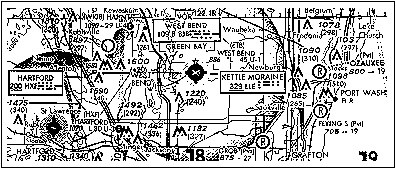
|
Upcoming Chapter Events A word from our President Member Profile CFI Tips #4 Membership Report Just Flying By Up, Up & Away Chapter Calendar Chapter Aircraft Build Survey Board Meeting Minutes |
|
A word from our President by Jim Dricken
Sincerely,
Jim Dricken
The most enjoyable experience I had working with this chapter has
been.....
The funniest aviation story I can recall is......
What do you look forward to accomplishing in our local chapter?
What is your favorite aircraft and why?
Anything else you'd like your fellow chapter members to know about you?
I sincerely appreciate your sharing and participation. Howard
Interesting stories and background on our chapter members, and photos, are always welcome. Our get to know our members feature is brought to you by our membership committee. If you have any membership questions, concerns, or ideas,
Here is a short scenario that gives flight instructors night terrors. The student, unaware of wind gradient effect, attempts a short field approach (steep and slow) or simply lets a normal approach get on the extreme side. Students and experienced pilots alike tend to begin ignoring the airspeed indicator as the ground nears, sound familiar? Here's where the trouble begins! Old habits jump in the picture and a quick glance at the airspeed triggers a knee jerk reaction: lower the nose! Whoa! The ground is coming up fast: raise the nose! By now the sink rate is high and the airspeed is even lower! Can the landing be saved by elevator alone? Unlikely! Mother nature and panic yankin and crankin have robbed the airplane of the necessary kinetic energy needed for a controlled flare! The only trick left in the bag is POWER! Immediate and significant power, not just an extra hundred RPM. By now the CFI's pulse rate has doubled and his/her hand has already beat the student to the draw.
Realistically, Lear Jet drivers seldom have to think about wind gradient. But to those of us driving around in 100 mph bug smashers wind gradient, or more properly, ignorance of wind gradient could ruin a good day of flying. What's the lesson here? When making slow steep approaches such as for a short field landing be alert for a sudden drop in airspeed just as you get down to the flare zone and take one hand off the yoke an put it on the throttle. In addition, trees and buildings near the runway can cause a "wind shadow" effect. More than once I have noticed this effect when landing on runway 31 at West Bend during winds from the southwest. Short grass strips are sometimes carved out of the woods and are especially prone to this nasty surprise on windy days! So maybe that platitude about carrying and extra 5 to 10 knots isn't so silly after all!
Stability about each of the three axes is not referred to by the axis of
rotation. Stability about the lateral axis, or pitching motion is referred
to as longitudinal
behavior, since it involved rotation of the airplane as it moves along the
longitudinal axis. Stability about the roll axis is called lateral
stability, and yawing characteristics about the vertical axis are referred to
as directional behavior. Airplanes are therefore considered for their
longitudinal stability, or stability in pitch; lateral stability or stability
in roll; and directional stability in yaw. Lateral and directional stability
are not entirely independent of each other, and have to be considered
together for the determination of certain motion. A turn involves both roll
and yaw. The most important consideration in airplane design for stability
is longitudinal stability.
FAA Question: What determines the longitudinal stability of an airplane?
September 2002 Dear Member, Your immediate and thoughtful
input is essential to guide our chapter’s future educational goals and directions. With our facility nearly complete the
opportunity is at hand to utilize it to allow more members to take an active role in
the chapter. Your immediate input is
essential for the board to clarify the members’ interests. Recently, a rebuilding project from Aeromart
was brought home for consideration. After
much board discussion it was decided to forego this project because of questionable
benefits and costs. Despite this
decision, the board believes a chapter aircraft project is an appropriate goal
because it would: ü
Focus our energies and
stimulate involvement. ü
Tie in with our educational
goals. ü
Provide tangible return for
membership dues. If the “right” project came
along I would be: a.
Unable to participate at this time because of other interests or commitments. b.
Interested, but could give only partial commitment. c.
Excited because I’ve been looking for something like this. d.
Other, please explain on the back of this sheet. My idea of the
“right project” a.
Restoring an older plane. b.
Building a kit. c.
Scratch building something from plans. d.
Other, see back. If the chapter were to build or
restore a plane what would your interest be? a.
Learn to fly and get my license in it. b.
Enjoy the variety of a different type of plane such a taildragger or
amphibian. c.
Probably wouldn’t be
interested in flying it. d.
Would be interested in being a passenger in it at chapter functions. e.
Other, see back. If the chapter could or would not
support the costs of the project would you be interested in a.
Making a financial commitment with the goal of part ownership. b.
Possibly interested but need to know more. c.
Financial commitment is out of the picture. d.
Other, see back. How should the chapter treat the
cost of ongoing ownership, including flying? a.
OK to subsidize all or part, if the project meets educational guidelines. b.
Some type of tiered structure based on member involvement. c.
Pay as you go. d.
The chapter should create a type of flying club within the chapter separate
from other chapter projects. e.
Other, see back. An aircraft building project does
not fit our mission. I’d rather see
our chapter focus more on: a.
Youth education such as Air Camp: b.
Workshops such as EAA Sport Air worshops on composites or general kit skills. c.
Fly-outs and/or pancake breakfasts, Airfest etc. d.
Socials and guest speakers as before. e.
Other, see back.
If you wish to get involved with the exciting direction an aircraft project
could take the chapter and wish to serve on a committee, let us know. The board will not act without member input. We need your ideas. Reply now!
Thanks. _____________________________________________________________________________________________________ _____________________________________________________________________________________________________ _____________________________________________________________________________________________________ _____________________________________________________________________________________________________
by Don Miller, Secretary
May 2002
Present: Ron Champeny, Glen Brandt, Mark Hanrahan, Don Miller, Jim
Dricken, Don Shane, Dan Staehler, Randy Finco, Paul Lupton, Gene Zorn,
Howard Kaney.
Minutes of previous meeting reviewed. Approved, motion by Mark Hanrahan.
Seconded by Don Shane.
June 2002
Present: Ron Champeny, Glen Brandt, Mark Hanrahan, Don Miller, Jim
Dricken, Don Shane, Dan Staehler, Randy Finco, Paul Lupton, Chris Good,
Howard Kaney.
Minutes of previous meeting reviewed. Approved, motion by Ron Champeny.
Seconded by Randy Finco.![]()
Upcoming Chapter Events
9/18 Wed. 7 PM corn roast/General meeting
10/16 Wed. 7 PM Jeff Molnar from Green Bay Flight Service.
11/3 Annual chili dump
11/20 Wed. 7 PM John Duffy Vietnam Vet flew choppers, rescue missions.
See the Chapter Calendar section for details on frequent Chapter activities.


One of our charter members, Ernestine Lynfoot has been quietly snapping pictures and taking notes since our first meeting in July of 1996 and volunteered to be our Chapter Historian. Now, after 6 years Ernestine has passed the torch (camera) on to Allison Finco. The Chapter Historian position isn't as obvious to our membership as flying Young Eagles, running Aeromart, teaching at Aircamp or completing some of our building improvments, but if no one took the time to record our history it would be lost or relegated to our aging memories. Thanks Ernestine, from all of us for a wonderful job and best wishes Allison for continuing.
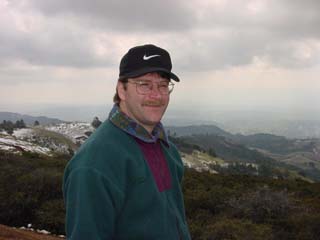
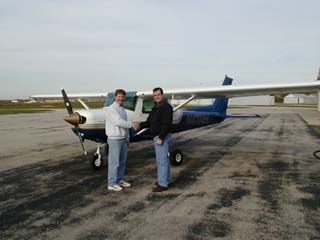
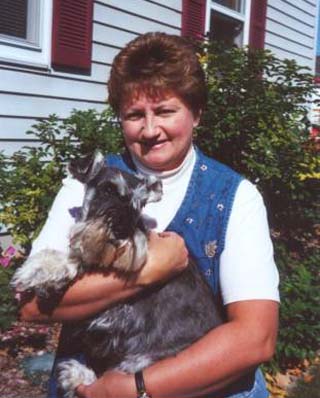

Member Profile
by Howard Kaney, Membership Chairman
Today we are visiting with Dick Kleinmann. Dick, what attracts you to EAA?
The chance to expand my horizons by meeting new people and learning
about aviation and the chance to just plane ;-) have some fun.
Seeing the chapter compass rose come to life because of an incredible
bunch of volunteers willing to put in several long and early work sessions.
It was a valuable lesson in leadership, cooperation, compromise, politics,
spray painting, stencil making, teaching, learning, fund raising and public
speaking that I will never forget. That is what I call expanding my
horizons. I have to say the trip to Basler Turbo Conversions@ OSH was
really neat too, along with the WW II vets telling their stories at the
monthly meetings.
I don't have much experience here but Craig Larson would problably have
to chuckle at the thought of my night time dual cross country with him. He
problably doesn't try to get five night time landings at GRB, ATW, OSH, FLD
and ETB all in a row anymore. Craig caught me approaching FLD from the
north without descending to pattern altitude, I guess I was just planning on
swooping in like a hawk, so what does he do but pull the throttle on me.
Well after a failed attempt at rwy 18 because I was still too high I made a
go for rwy 27 and almost didn't make it. Thank God that engine out was just
"temporarily" out since I believe I used it to make it over the threshold.
Engines do restart right when you need them, don't they? After the rollout
and turn off I think it went something like "where the h___ am I, which way
is North and how do I get out of here?" I was pretty rattled at the time
but can look back and laugh now.
Helping make our endeavors at various projects and events a success and
hopefully to help encourage others to continue and make it through their
dream to fly as others helped me along the way.
I don't know yet, but I am willing to give them all a try! That is
part of why I joined the chapter. Just hanging around talking about the
various planes and maybe getting to ride in some of them so that someday if
I can purchase one myself I can get a better idea of what I like. I would
like to get checked out in the Piper Arrow at WB Air so I can rent that for
some longer trips.
I've been married 18 years to my wife, Lori and live in Kewaskum with
our dog Tuffy a 14 year old Schnauzer. I like to bike (preferrably on nice
and flat rails to trails type trails), snowshoe, cross country ski, and have
recently gotten into "Geocaching" which is like scavenger hunting with a
hand held GPS unit finding caches that are posted on the internet and
located all over the state, USA and the World. Check out
www.geocaching.com. I am a Registered Land Surveyor and recieved my Private
Pilot license (ASEL) on Feb. 27, 2002. Now I've got one license to earn
money and one to spend it.
please contact Howard Kaney , hkaney@execpc.com.
 CFI Tips #4
CFI Tips #4
by Paul Lupton CFII
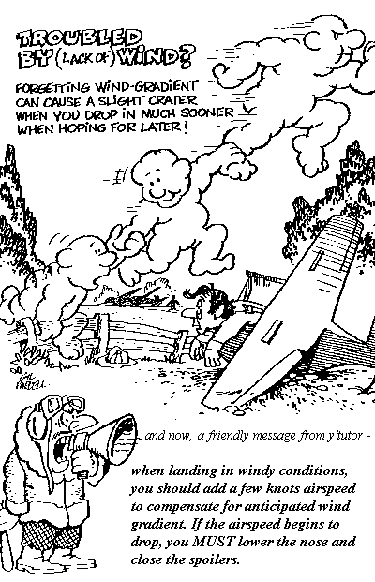 Last issue I promised that I would discuss wind as a topic this issue. I foolishly assumed I'd be able to draw from years of experience and a little reading and put together a brief lucid discussion. Wrong! After a thoughtful discussion with Kyle Howard (former technical counselor for EAA 1158 and CFI) I concluded I'd need to do some serious homework if I wanted to say anything more than worn out platitudes, e.g. "Carry an extra 5 to 10 mph on your approach during gusty conditions". Fortunately, the internet makes a visit to the library almost obsolete.
Last issue I promised that I would discuss wind as a topic this issue. I foolishly assumed I'd be able to draw from years of experience and a little reading and put together a brief lucid discussion. Wrong! After a thoughtful discussion with Kyle Howard (former technical counselor for EAA 1158 and CFI) I concluded I'd need to do some serious homework if I wanted to say anything more than worn out platitudes, e.g. "Carry an extra 5 to 10 mph on your approach during gusty conditions". Fortunately, the internet makes a visit to the library almost obsolete.
One of my favorite instructor tips is to remind students to expect an unusually big drop in airspeed during a steep approach on a windy day. Expecting the old reliable FAA Flight Training Handbook AC 61-21 to back me up, I was disappointed. The internet, however, came through. What I had to search under was "wind gradient". Briefly put, wind gradient is the characteristic of the atmosphere to behave as a "sticky fluid". When air moves over a surface the friction of the surface slows the flow rate. Sometimes described as the boundary layer, this region of affected air can be as little as 500 feet over smooth water to as much as 1500 feet over tall buildings. (We'll leave mountains out of this discussion!) University of California Davis has 3 wind tunnels, even one devoted to model turbulent characteristics of the boundary of our atmosphere near the ground. (http://mae.engr.ucdavis.edu/~wind/) See the attached cartoon showing the hapless glider pilot discovering the phenomena of wind gradient. In a glider, closing wing spoilers is the equivalent of adding power.
Obviously on a calm day there is no gradient but on a windy day the difference between the surface wind and the wind at 200 feet can be 10 knots or more! That is to say the speed of the wind near the ground can be considerably less than at 200 feet AGL, for example. Rapidly dropping down into this region before the airplane can re-establish its normal airspeed causes not an apparent drop in airspeed but a real drop with the accompanied drop in lift. Compensating with rapid up elevator causes more drag and
lowers the airspeed further!
Wind shear is a term that gets a lot of press these days and airline accidents and GA accidents have numerous references to pilot's or airplane's inability to cope with rapidly changing wind speeds when flying near the ground. Wind shear and wind gradient are kissin cousins. Wind shear is often associated with strong convective activity (thunderstorms) whereas wind gradient is present any time the wind blows.
The internet gave numerous sites that discussed the importance of coping with wind gradient but interestingly most of the sites were connected with gliders, ultralights, or powered parachutes. Get the connection here: all fly at relatively low speed. To pilots of these machines an unexpected 10 knot drop in airspeed could spell disaster.
Next time: Can a crosswind be your friend?
P.S. Did you know that virga is an acronym? The answer next issue.

Membership Report
by Howard Kaney, Membership Chairman
We have two new members, Bruce Post and Gunter Voltz.
This brings us to a total of 71 members.
Welcome aboard!

 Just Flying By
Just Flying By
by Ernestine Lynfoot
AIRPLANE AXES: Movement about the lateral axis (nose-up or nose-down) is
called PITCH. Rotation about the longitudinal axis is called ROLL. Motion
due to a movement about the vertical axis is called YAW. All of these axes
pass through the center of gravity (CG).
Submitted by Ernestine Lynfoot
source: Aerodynamics by Hubert Smith

 Up, Up & Away
Up, Up & Away
by Randy Finco, Fly-Out Chairman
This past Sunday we had 18 people 5 airplanes flew to HoChunk, we had brunch there and left a little money. Allison was the big winner, she came
away with $65.00 in less than a half hour. 
Chapter Calendar
Chapter Breakfasts: 1st Saturday of the month 6:30 - about 9:30
Chapter Fly-Outs: 4th Sunday of each month, 8am, West Bend Air (Randy Finco, 377-9676)
Chapter Meetings: 3rd Wednesday of each month, 7pm EAA Chapter 1158 hangar
310 Aerial Drive, West Bend, WI Phone: (262)338-8411
9/18 Wed. 7 PM corn roast/General meeting
10/16 Wed. 7 PM Jeff Molnar from Green Bay Flight Service.
11/3 Annual chili dump
11/20 Wed. 7 PM John Duffy Vietnam Vet flew choppers, rescue missions.

Please
respond immediately to this questionnaire. Bring
it to the next meeting, Wednesday, September 18, or, place in envelope and return by mail to membership
chairman Howard Kaney, 6246 Pleasant Hill Dr., West Bend, WI 53095, or, call
675-6686, or e-mail to hkaney@execpc.com.
If
this survey missed your ideas and you wish to simply express your thoughts we need
that input too.

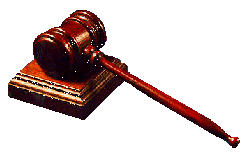
Board Meeting Minutes
Treasurers report presented by Don Shane. Approved by Randy Finco.
Seconded by Mark Hanrahan.
Young Eagle days are scheduled for 5 May and 8 June.
As of yet there are no new Young eagle dates.
Facilities update: Ron will contact the roofing contractor and again
try to establish a start date.
B-17 visit - Howard Kaney is handling promotions. Jim Pieper is the
event coordinator. Hotel accommodations for the crew have been made and
two crew cars have been reserved.
Aeromart update: We are looking for volunteers and also a successor for
Glen for the 2003 Aeromart.
AirCamp - Plans are proceeding, paid registrations are beginning to
arrive. Craig Davenport (West Bend Air) has generously donated $1,000 to
AirCamp.
The beer permit issue for Airfest was put to a vote. There was 1 vote in
favor, 9 against, and 1 abstain. Chapter 1158 will not obtain the beer
permit for Airfest.
Our second Chapter breakfast will be held 6 April 2002. We are looking
for small projects that can be addressed by the attendees.
8 May will be a combined chapter social and recruitment drive. Howard is
sending letters to select area EAA members.
Motion to adjourn by Jim Dricken. Seconded by Don Miller.
Treasurers report presented by Don Shane. Approved by Paul Lupton.
Seconded by Ron Champeny.
Committee formed to design the display of Airport and Chapter historical
photographs and other materials. The committee consists of Dan Staehler,
Howard Kaney, Ernestine Lynfoot, and Paul Lupton.
Membership report: We acquired 8 or so new members from our recruiting
efforts in May.
Budget committee - No activity reported.
Paul Lupton noted that AirCamp is at full attendance.
Glen Brandt noted that we are actively seeking volunteers for AeroMart.
Facilities update:
Hangar wiring project is nearly complete.
The roof is sealed, but a final coat is still pending.
East wall door is unusable. Motion to repair with expenditures up to
$350. Approved by Ron Champeny, seconded by Mark Hanrahan.
Motion to thank Sysco, in writing, for their donations to the B-17
event. Don Miller will find out who to contact and develop the letter.
The compass rose project is proceeding. Sherman Williams donated some
paint. Additionally they provided a $300 Purchase Order.
Motion to move the Chapter WEB site to eliminate pop up advertising. $35
cost to reregister the domain. Approved by Paul Lupton, seconded by Glen
Brandt.
Motion to adjourn by Mark Hanrahan. Seconded by Jim Dricken.

Officers, Teams, Committees
This and all Kettle Moraine EAA Chapter 1158 newsletters are
provided for your enjoyment only. No claim is made and no
liability is assumed, expressed or implied as to the accuracy
or safety implications of any material presented. Viewpoints
of the writers are not necessarily those of this or any EAA
Chapter or of the Experimental Aircraft Association (EAA).
Use of any of the material presented, whether by applying,
copying or quoting, is done solely at the risk of the user.
Area Code 262
President
Jim Dricken
334-9515
jdricken@aosmail.com
Vice President
Mark Hanrahan
243-3666
Secretary
Don Miller
306-1405
djan@execpc.com
Treasurer
Don Shane
338-1537
don@suburbanservant.com
Board Members
Glen Brandt
gbrandt@execpc.com
Ron Champeny
334-4309
champeny@execpc.com
Randy Finco
377-9676
glps76@aol.com
Chris Good
644-0511
chris@genroco.com
Howard Kaney
334-9451
hkaney@execpc.com
Paul Lupton
629-4445
plupton@hnet.net
Dan Staehler
338-1351
staehler@execpc.com
Facility
Committee:
Facility Manager
Ron Champeny
334-4309
champeny@execpc.com
Glen Brandt
gbrandt@execpc.com
Tom Calenberg
334-0205
tjc@hnet.net
Marv Hoffman
675-6808
Howard Kaney
334-9451
hkaney@execpc.com
Russ Kaye
284-3695
rkaye@execpc.com
Jim Retzlaff
338-3728
bikerpilot@spiritusa.net
Dan Staehler
338-1351
staehler@execpc.com
Fly-out
Chairman
Randy Finco
377-9676
glps76@aol.com
Historian
Allison Finco
377-9676
glps76@aol.com
Internet
Webmaster
Steve Roensch
375-2228
sroensch@wi.rr.com
Home Page
http://eaa1158.freeservers.com/
Membership
Committee:
Chairman
Howard Kaney
334-9451
hkaney@execpc.com
Glen Brandt
gbrandt@execpc.com
Membership Growth Team
Open Positions
Newsletter:
Editor
Dan Staehler
338-1351
staehler@execpc.com
Reporters
Ron Champeny
334-4309
champeny@execpc.com
Howard Kaney
334-9451
hkaney@execpc.com
Paul Lupton
629-4445
plupton@hnet.net
Publishing
Team:
Paul Lupton
629-4445
plupton@hnet.net
Program
Committee:
Chairman
Randy Finco
377-9676
glps76@aol.com
Allen
Bruggink
335-6459
allenb@hnet.net
Bill
Groeneveld
334-9436
billg@hnet.net
Howard Kaney
334-9451
hkaney@execpc.com
Raffle
Committee :
Chairman
Don Miller
306-1405
djan@execpc.com
Printing
Howard Kaney
334-9451
hkaney@execpc.com
Treasurer
Don Shane
338-1537
don@suburbanservant.com
Recognition
Committee:
Open Positions
(AOPA Airport Support
Network Volunteer)
Jim Pieper
334-5856
jimzemail@telocity.com
Educational Chairman
Paul Lupton
629-4445
plupton@hnet.net
Flight Advisor
Kyle Howard
334-2624
Technical Counselor
Bill Groeneveld
334-9436
billg@hnet.net
Young
Eagles
Gerald Zorn
626-8764
gene@hnet.net
Coordinators
Sandra Zorn
626-8764
gene@hnet.net
  Chapter Newsletter Index Chapter Newsletter Index
|
  |


 Kettle Moraine EAA Chapter 1158 Webmaster
Kettle Moraine EAA Chapter 1158 Webmaster